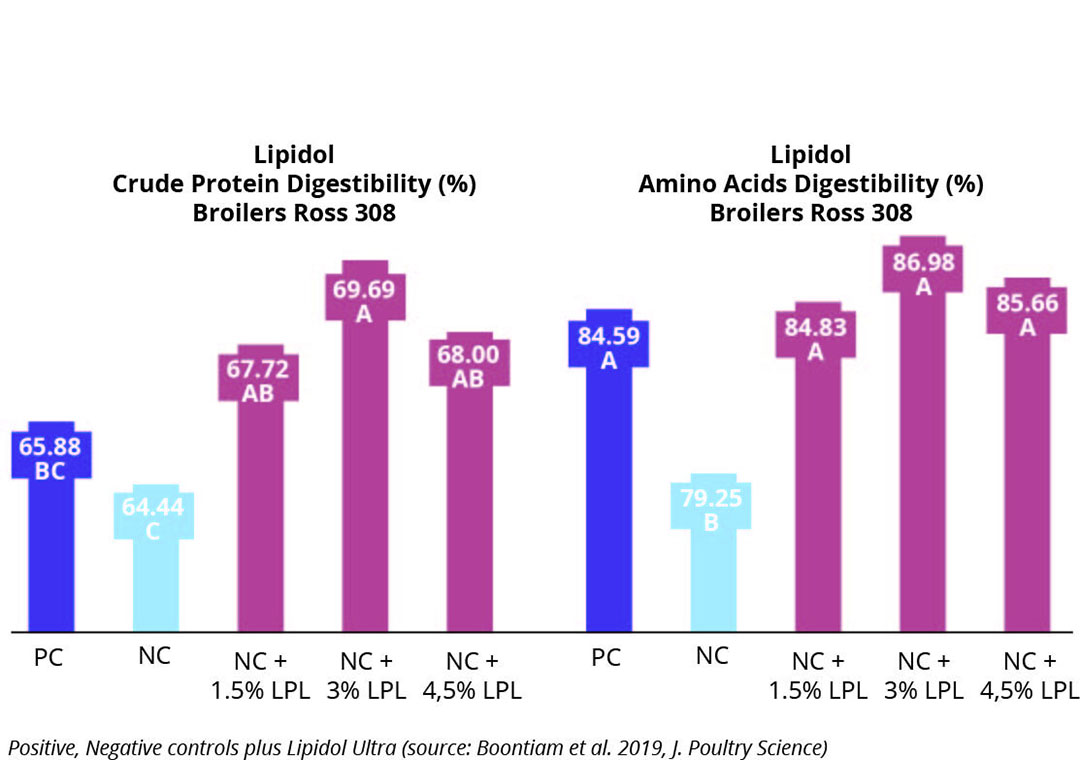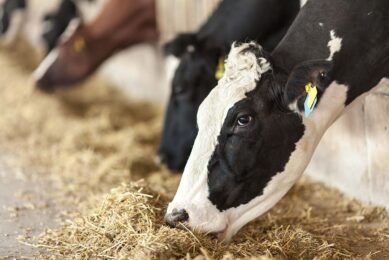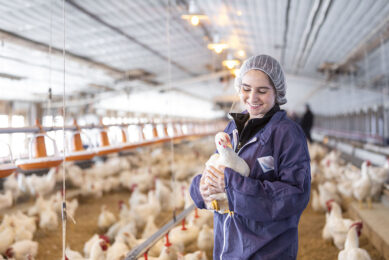Using lysophospholipids for dietary consolidation

Lysophospholipids add a unique new functionality to modern broiler diets, increasing the efficiency, of the natural function of the small intestine, allowing lower use of key cereals such as soya.
Lysophospholipids are produced by hydrolysing the naturally occurring phospholipids in soya lecithin. They have a unique function within the small intestine where they will increase the efficiency of protein channels used for nutrient absorption. This key functionality can be utilised to great effect when looking to formulate with a mindset of both sustainability and welfare. By increasing nutrient absorption, non-specifically, all nutrients within the diet, will cross the small intestinal barrier faster and into the bloodstream for use. Pathway Intermediates has found that adding 1.5% up to 3% lysophospholipids per ton of feed can be used to reduce the addition of key focus ingredients such as soya, reducing its inclusion by two 30 kg per ton of feed.
Benefits of utilising lysophospholipids
In both research facility and commercial farm trials, the use of lysophospholipids has shown to maintain feed intake, and growth performance, whilst allowing the reduction in use of focus ingredients. These include soya as previously mentioned, and other more financially demanding ingredients, lysine and methionine, for example.
The use of lysophospholipids has been shown to also increase villi growth with the associated benefits of increased absorption area. This coupled with the increased efficiency of the protein channels provides both increased effectiveness after a week of feeding, and a lag effect. Where in late finisher diets a withdrawal can be utilised from an initial higher supply. Further benefits have been shown in research that removal of other intestinal additives such as butyric acid can further reduce dietary costs due to the increased effects of the lysophospholipid. Whereas complimentary effects have been shown alongside botanical extracts, and medium chain fatty acids, further increasing the health of the small intestine, thus the animal. The increased localised supply of one of the key lysophospholipids, lysophosphatidylcholine, has been shown to provide great effects in increasing an immune response and supporting macrophage activity in the blood supply around the small intestine. The influence of increasing dietary choline is also very well documented.
Reduced mortality rates
The positive effects on welfare can also be realised by observing a total reduction in mortality and other key welfare indicators. Where typical mortality is observed to drop to below 1.5% from significantly higher number across commercial units. This, as above, can be attributed to increased gut health, macrophage activity and better amino acid absorption, thus supply for an immune response. Reducing mortality also is a key point which is not, perhaps given the focus it warrants, in the quest for greater sustainability. Utilising raw materials which ultimately do not result in the production of an animal reaches back beyond the actual animal itself but its production, not only in layers but also in swine. Thus, a more total lifetime analysis for mortality indicates a higher impact on sustainability than just the feed for that specific animal. Reviewing several trials at Pathway, the use of lysophospholipids indicates that there is increased survivability throughout all life stages. Which is a positive for both sustainability and animal welfare (Figure 1).
Figure 1 – Lipidol Ultra with reduced CP and amino acid supply by 5%, indicating uptake of both energy and amino acids in broilers after 28 days.

Further such welfare observations can be made, for example, in a reduction in wet litter, and the associated reduction in foot pad lesions. Especially over the winter period is noted when using an appropriate lysophospholipid supply. Continuing the welfare discussion, an alternative observation is made within the summer months where in periods of higher ambient temperatures, maintaining feed intake and managing competition within the birds, can be problematic. Again, a similar supply of lysophospholipids helps to maintain feed intake and it can be observed that a lower total condemnation score from slaughterhouses is received. The specific lysophospholipid involved for this is lysophosphatidylinositol which is also a key component of Pathways Lipidol Ultra.
Sustainability and welfare goals
It goes without saying that there is a call for all nutritionists is to reduce total dietary protein, which also can be achieved by utilising lysophospholipids. Using our matrix values, derived from metabolism crates at the pathway R&D centre. Up to a relative 5% drop / uplift of crude protein and amino acids can be utilised by reformulating or adding in on top. Depending on the requirements for the specific diet. This is the main driver for the reduction in use of soya, which is the main driver for crude protein supply. It is always down to the individual nutritionist and dietary goals as to what would be best used in substitution, however local sources of wheat are typically used.
Pathway also has its own sustainability goals and ensures that all of the lecithin sourced is from sustainable sources, as such also wishes to contribute to the reductions of deforestation.






